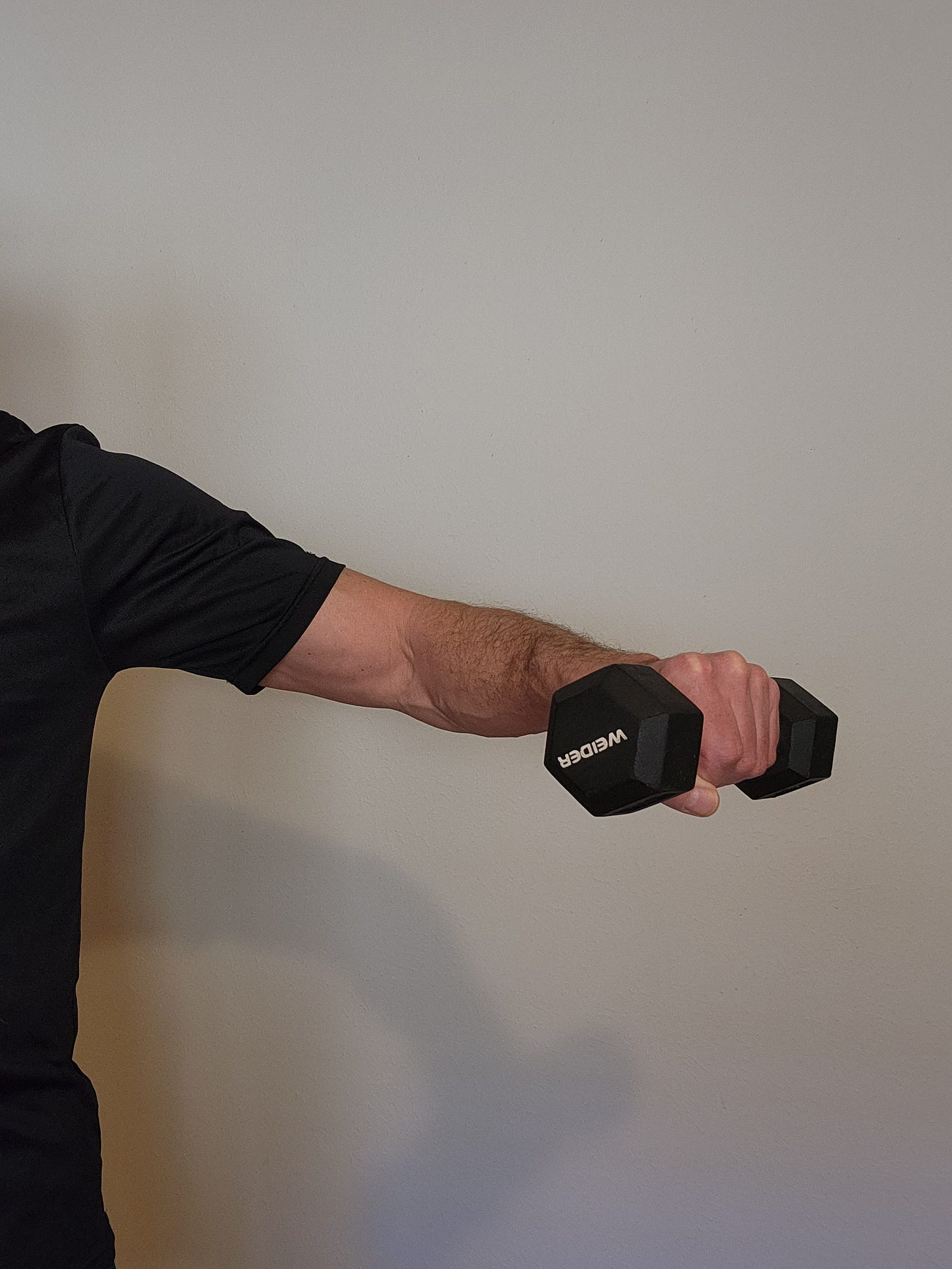This is not medical advice. These opinions are based solely on observed clinical experience, and I have no studies to prove this.
The shoulder was designed for mobility, and likely hanging, with the arm close to the head. It was poorly designed for leveraging weight away from our bodies’ center mass. The muscles that lift the arm are attached very close to the pivot point, making leverage very poor. That is not to say that we can’t do it. It’s just that a lack of this consideration often leads to injury. The rotator cuff muscles are relatively small, and are not designed to be the prime movers of the arm. This link below describes that in more detail.
My target audience is beginner fitness or rehab clients. There are professionals who can perform this exercise without issue, however in my experience, this exercise causes more problems than is necessary.
Consider this for a minute. It's generally accepted that we perform chest flys with bent elbows, and the chest muscles are much bigger and stronger than the deltoids. If this is the case, why are we testing and encouraging lateral and front raises with straight elbows, poor leverage, sometimes pain, weakness, and impingement.
Bodybuilders intuitively have bent their elbows during lateral raises. Partially to improve leverage, partially because they are lifting much heavier dumbells. They also have massive RTC tone, and I would argue more importantly, massive latissimus tone, to anchor against the torque during lateral raises.
Straight leg raises are another example of poor leverage. These aren’t necessarily bad for you, but can put a tremendous amount of strain on your hip flexors and lower back. You don’t see them performed as much any more. Certainly not 3 sets of 20 with ankle weights! Elite trainers and athletes can stabilize their spine and perform that exercise with ankle weights. With most fitness beginners and patients, that is just going to cause more problems.
This is also why front deltoid raises, with a straight elbow, are not the ideal exercise for strengthening the deltoids. This straight out arm position, like a robot or zombie, is very prevalent in rehab, orthopedic testing, aerobics, personal training, etc. Overhead dumbbell presses better represent a safe shoulder position and leverage. Nowhere in life do we need a straight arm rotation. Fast pitch softball is similar, however they are using momentum, and many other muscles to assist.
One PT mentioned to me that a front deltoid raise happens when we handle luggage on an airplane. This is not true. We go from a carry, to partial upright row (with bent elbow/better leverage) to an overhead press.
All scientific study starts with theory. Maybe this will spark further study. Measuring incidence of impingement from one group to the next would take a massive number of people surveyed across many years. Or you can appreciate the poor leverage of the shoulder.
Does the elbow have to be straight?
Click here to watch a video explaining why the shoulder has poor leverage.








